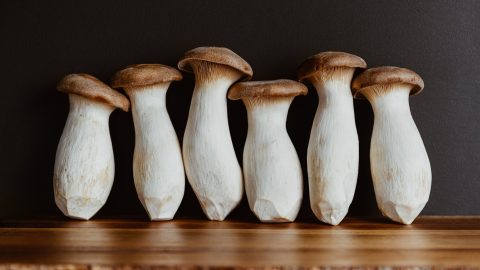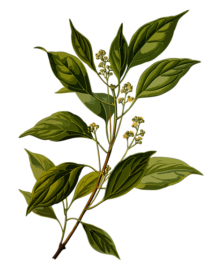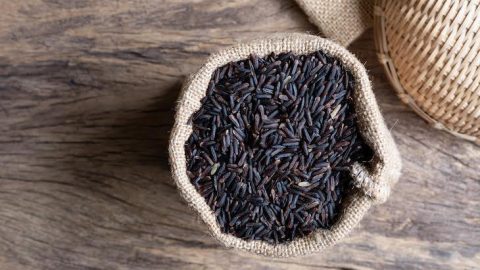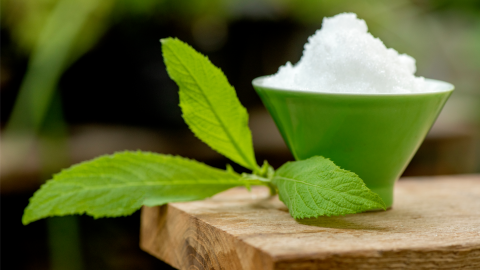What is Myrcene?
Myrcene, specifically β-myrcene, is a monoterpene and the most common terpene produced by cannabis (some varieties contain up to 60% of the essential oil). Its aroma has been described as musky, earthy, herbal; akin to cloves. A high myrcene level in cannabis (usually above 0.5%) results in the well-known “couch-lock” effect of classic Indica medicinal cannaBis strains. Myrcene is found in oil of hops, citrus fruits, bay leaves, eucalyptus, wild thyme, lemon grass and many other plants. Myrcene has some very special medicinal properties, including lowering the resistance across the blood to brain barrier, allowing itself and many other chemicals to cross the barrier easier and more quickly.
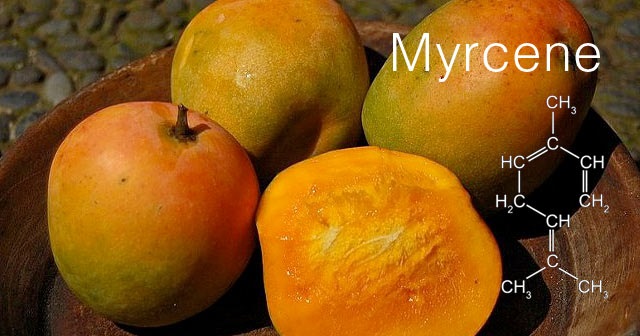
Myrcene is the most common terpene produced by cannabis. Its aroma has often been described as earthy and musky; similar to cloves. Myrcene is also found in eucalyptus, wild thyme, hops, mangoes, citrus fruit, lemongrass, bay leaves, and many other plants. It has been used extensively in folk medicine throughout history for the treatment of pain.
Like all other compounds found in the cannabis plant, there is much to learn about the potential therapeutic effects of myrcene. However, several animal studies including a 1990 study of mice suggested myrcene is capable of inducing pain blocking effects. In addition, a 2015 study of human cartilage cells (chondrocytes) in a test tube found myrcene demonstrated “significant anti-inflammatory” effects.
There is also evidence to suggest myrcene may be beneficial in the prevention of gastrointestinal ulcers. A 2014 study found myrcene “significantly decreased” stomach and intestinal ulcers. Myrcene was also found in the study to increase production of the protective mucus in the stomach.
Historically, myrcene has also been used as a sedative in folk medicine. There may be some scientific evidence to support this. A 2002 study of mice concluded that myrcene “presented sedative as well as motor relaxant effects.”
In conclusion, myrcene appears to have a promising role in the treatment of pain and inflammation. However, the full potential benefits of myrcene are not yet fully understood. A better understanding of its clinical effects in humans may someday lead to the development of therapies targeting specific disorders.
References
Bonamin F et al; The effect of a minor constituent of essential oil from Citrus aurantium: The role of β-myrcene in preventing peptic ulcer disease; Chemico-Biological Interactions; 2014 Apr; 212: 11 – 19.
Rufino A et al; Evaluation of the anti-inflammatory, anti-catabolic and pro-anabolic effects of E-caryophyllene, myrcene and limonene in a cell model of osteoarthritis; European Journal of Pharmacology; 2015 Mar; 750: 141 – 150.
Rao V et al; Effect of myrcene on nociception in mice; The Journal of Pharmacy and Pharmacology; 1990 Dec; 42(12): 877 – 878.
do Vale T et al; Central effects of citral, myrcene and limonene, constituents of essential oil chemotypes from Lippia alba (Mill.) n.e. Brown; Phytomedicine; 2002 Dec; 9(8): 709 – 714.
http://www.internationalhempassociation.org/jiha/jiha4208.html
https://terpenoids.net/terpene-myrcene/
https://www.steephill.com/science/terpenes
https://www.ncbi.nlm.nih.gov/pmc/articles/PMC3165946/
https://www.sciencedirect.com/science/article/pii/S0378427497000349
https://www.sciencedirect.com/science/article/pii/S0278691508006492?via%3Dihub
Author Bio
Dr. Wright Penniman M.D. is a board certified family physician with 15 years of clinical experience and 4 years of experience as a medical director with a major health insurance company.
